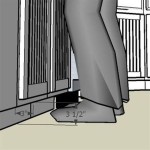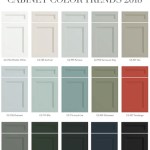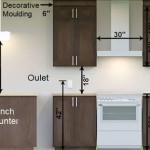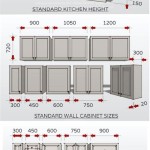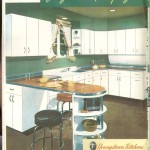Kitchen Cabinets and Trim Color: A Guide to Harmonious Design
The harmonious interplay of colors in a kitchen is a vital component of creating a visually appealing and inviting space. Two key elements that significantly influence the overall aesthetic are the cabinet and trim colors. Choosing the right combination can elevate the design, define the style, and set the mood for the entire kitchen. This article will provide a comprehensive guide to understanding the principles of color coordination, exploring various combinations, and offering insights for achieving harmonious results.
The Foundation: Choosing the Right White
White is often the preferred choice for kitchen cabinets and trim due to its versatility and ability to create a sense of spaciousness. However, not all whites are created equal. The undertones of white, such as warm, cool, or neutral, can drastically influence the overall feel of the room. Warm whites, with yellowish hues, can make a space feel cozy and inviting. Cool whites, with blue or gray undertones, offer a crisp and modern look. Neutral whites strike a balance between the two, providing a clean and timeless aesthetic.
When selecting white for cabinets and trim, consider the following:
-
Natural Lighting:
Whites with warm undertones tend to appear more yellow in spaces with abundant natural light, while cool whites may seem too stark. -
Desired Ambiance:
Warm whites create a more casual and relaxing atmosphere, while cool whites contribute to a sophisticated and contemporary feel. -
Existing Color Palette:
If other elements in the kitchen, such as countertops or backsplash, have warm or cool undertones, it's best to choose a white that complements them for a cohesive look.
Creating Contrast and Depth: Introducing Color
While white cabinets and trim offer a clean and classic approach, introducing color can inject personality and visual interest. The key is to strike a balance between the two to create a cohesive and sophisticated design. Here's how to incorporate color effectively:
-
Accent Walls:
Consider painting one wall a contrasting color to create a focal point. This is especially effective in large kitchens where a pop of color can break up the visual monotony. -
Island Cabinets:
Painting the kitchen island a different color from the main cabinets adds visual interest and defines the space. -
Trim and Molding:
Using a slightly darker shade of the cabinet color for the trim and molding can provide a subtle contrast without overwhelming the space. -
Backsplash:
A patterned or colorful backsplash can introduce visual interest and complement the chosen cabinet and trim colors.
Color Combinations: Inspiration and Considerations
A successful color combination for kitchen cabinets and trim depends on personal preferences and the desired style. Here are some popular and practical combinations:
-
White Cabinets and Trim with a Gray Island:
This timeless combination offers a clean and modern look. Gray adds a subtle touch of sophistication while complementing white beautifully. -
White Cabinets and Trim with a Dark Blue Island:
This bold combination creates a dramatic statement. Dark blue adds a touch of elegance and complements white effectively. -
Cream Cabinets with White Trim and a Rustic Backsplash:
This combination evokes a charming and cozy farmhouse aesthetic. Cream cabinets offer warmth and richness while white trim provides a crisp contrast. -
Gray Cabinets with White Trim and a Natural Stone Backsplash:
This combination creates a sophisticated and contemporary look. Gray cabinets add a touch of sophistication, while white trim provides a clean contrast.
When choosing a color scheme, consider the following factors:
-
Natural Light:
Light colors reflect light, making a space feel larger and brighter. Darker colors absorb light, creating a cozy and intimate ambiance. -
Style:
Consider the overall style of the kitchen and choose colors that complement the desired aesthetic. -
Personal Preferences:
Ultimately, the best color scheme is one that reflects personal taste and brings joy.

Painting Crown Molding To Match Cabinets Is It A Good Idea

Tips For Modernizing Your Home By Painting Kitchen Cabinets Crown Molding And Furniture

How To Choose The Best White Paint Color Cabinets Trims Or Walls Kylie M Interiors

How To Paint Cabinets And A Contrasting Trim Within The Grove

The Best Interior Trim Color Ideas Paintzen

Behr Premium 1 Gal Ppu24 10 Downtown Gray Semi Gloss Enamel Interior Exterior Cabinet Door Trim Paint 712001 The Home Depot

21 Diy Affordable Ways To Redo Kitchen Cabinets Extra Space Storage

30 Best Kitchen Color Ideas And Combinations 2024

Behr Premium 1 Gal White Semi Gloss Enamel Interior Exterior Cabinet Door Trim Paint 712001 The Home Depot

How To Prime Kitchen Cabinets For Color That Pops The Perfect Finish Blog By Kilz
Related Posts

